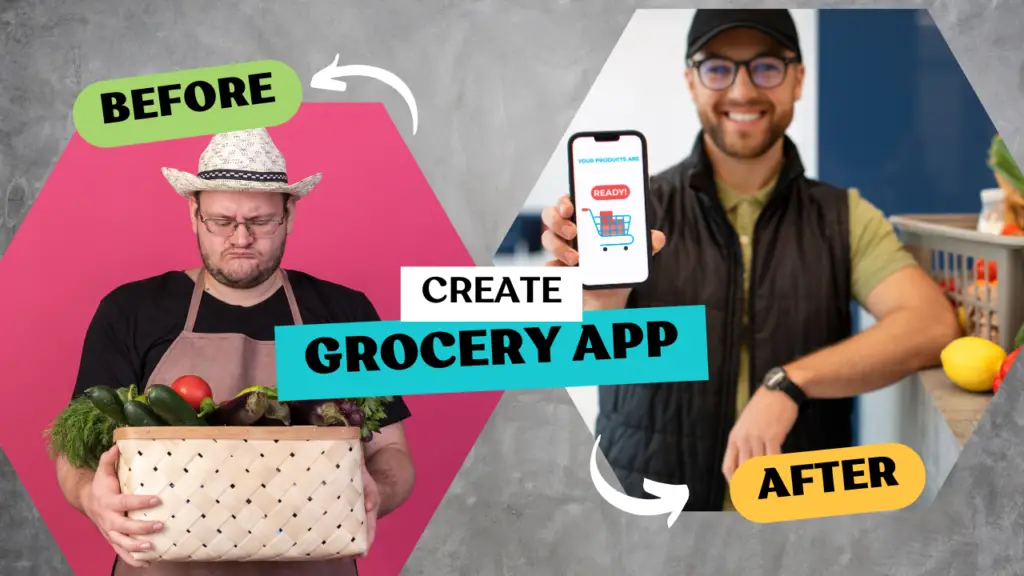Table of Contents
ToggleIntroduction
In today’s fast-growing digital market, technology integration is critical for businesses to remain competitive and meet consumer demands that are constantly changing. Transitioning to a mobile platform is more than a trend for grocery stores; it is a strategic step to improve customer experience, streamline operations, and capitalize on the immense possibilities of the digital marketplace.
In this detailed tutorial, we will go over the step-by-step process of transitioning your traditional grocery store to a mobile platform, including critical considerations, problems, and best practices to guarantee a smooth transition.
1. Market Research and Analysis:
Conduct rigorous market research before transforming your mobile platform. Understand your target audience and determine the market. Understand your target audience, discover market trends, and evaluate the competitors. Assess the demand for online grocery shopping in your area and learn about customer preferences and expectations. This initial study will serve as the cornerstone for your mobile platform strategy, allowing you to make educated decisions throughout the transition process.
2. Choose the Right Mobile App Development Partner:
Choose the proper Mobile App Development Partner To Create Grocery App: Choosing the proper mobile app development partner is crucial for the success of your transition. Look for skilled developers who have previously created successful e-commerce or grocery apps. Considerations include skill in the user interface (UI) and user experience (UX) design, integration capabilities, and the capacity to create a scalable solution that can expand with your company.

3. Define features and functionalities.
Work with your app development partner to define the features and functionality while create grocery app. Consider adding important features like user-friendly navigation, a product catalog, a shopping cart, secure payment choices, order tracking, and push alerts. Explore innovative features such as tailored suggestions, reward programs, and in-app incentives to improve your overall shopping experience.
Grocery App Features:
- Log-in & Sign-in
- Current Location
- User Profile
- Browse Items
- Shop by Category
- Add to Wish List
- Search Items
- Add to Cart
- Order History
- Order Tracking
- Delivery Schedule
- Multiple Payment Options
- Features include a digital wallet, social sharing, reviews and ratings, in-app chat, and inviting friends.
Admin Panel:
- Manage customers
- Manage offers and coupon codes
- Dashboard • Manage categories
- Real-time analytics
- Manage store
- Manage delivery boys
- Push notifications
- Manage Payment
- Delivery Panel
- Order Management
- Accept/Reject Delivery Requests
- Track Customer Location on Map
- Notify Delivery Requests
- Receive Delivery Confirmation
- Use In-App Chat or Calling
Identifying Key Features
I. Analyzing competitor applications
Being aware of the competition is one of the most important components of building a successful grocery mobile app UI UX. Analyzing competitor apps allows you to uncover existing features and functionalities while also determining ways to differentiate your app. Analyzing competing apps can also help you learn about user behavior and preferences.
II. Identifying Unique Selling Points
Based on your investigation of competition apps, you may determine your grocery delivery mobile app’s unique selling factors.
What features and functionalities can you provide that are not already available?
What distinguishes your app from the competition?
4. User-friendly Design
The success in create grocery app is dependent on its usability and user experience. Collaborate with designers to develop an intuitive and visually appealing interface. Ensure that the app is simple to use, with clear categories, a search option, and a smooth checkout procedure. Prioritize mobile responsiveness to accommodate consumers on a variety of devices, including smartphones and tablets.

6. Use Secure Payment Gateways:
Building trust with clients is crucial in online retail. To protect critical client information, use trusted and secure payment gateways. To meet different client preferences, provide a choice of payment options, such as credit/debit cards, mobile wallets, and other popular payment methods.
7. Build a Strong Delivery System:
Optimizing grocery delivery logistics is crucial for your mobile platform. Create a dependable and efficient delivery system that includes features like order tracking, delivery time estimates, and communication channels for consumers and delivery staff. Consider collaborating with local delivery firms or establishing your own fleet to ensure a flawless end-to-end experience.
Check Business Models.
- The Inventory Model
- The Multi-Vendor Marketplace Model
- The Shopping Model
- The Hyperlocal Model
- The Online Selling Model
8. Implement Marketing and Promotion Strategies:
After creating grocery app, effective marketing is crucial for attracting and retaining customers. Create a complete marketing strategy that incorporates pre-launch promotions, loyalty programs, and targeted advertising. Use social media channels, email marketing, and in-app promotions to raise awareness and increase user engagement.
9. Provide Excellent Customer Support:
Establish a strong customer support system to quickly respond to requests, issues, and criticism. Include numerous channels, such as live chat, email, and a helpline, so that clients can readily contact out for help. A responsive customer care team improves the consumer experience and generates trust in your brand.

10. Monitor analytics and collect feedback.
After you’ve launched your supermarket app, regularly watch analytics to obtain insights about user behavior, popular products, and general app performance. Utilize this data to continuously tweak your app and improve the user experience. In addition, actively solicit input from users via surveys, reviews, and direct communication to find areas for improvement and innovation.
Grocery businesses require specific service standards to drive brand loyalty, and these requirements must be continuously monitored to assure client retention:
- Stock levels are maintained at 90% or higher for all goods.
- Greeting clients within 20 seconds of arriving at service counters, even if a line is present. Walking consumers to things they inquire about instead of pointing or providing verbal directions. Always keep shelves and floors clean, and free of water and debris.
- Displays are organized and appealing, with clear pricing.
- Greeting and welcoming every customer who stands within 10 feet of a colleague, even if the consumer hasn’t asked for help.
- Ensuring a customer found all necessary products, even if that meant sending an associate to retrieve something the consumer couldn’t find before the checkout transaction was completed.
Conclusion:
Moving your grocery shop to a mobile platform accords with modern consumer wants and preferences. You can prepare your grocery shop for success in the digital era by carefully planning each step of the transformation process, engaging with expert app developers, and putting customer experience first. Embrace the opportunities




